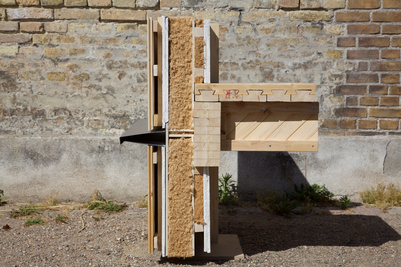
Project description
Through a series of experiments and multiple production methods, the project aims at optimizing geometry and manufacturing of bricks with use of reclaimed construction waste such as crushed bricks as well as by-products such as fly ash and ground granulated blast furnace slag. The new sustainable joint-free brick design introduces ambient-cured bathroom wall system, providing both a brick, a tile and a waterproofing in one, hence the name – brick tile.
BUILDING SYSTEM AND DESIGN OF GEOPOLYMER BRICK TILE
Bathroom constructed with geopolymer brick tile



Floor-wall junction detail




Introduction of two brick modules




Corner buildup - three iterations

Geopolymer brick tile production




Foto documentation of design development process

GEOPOLYMER EXPERIMENTS































